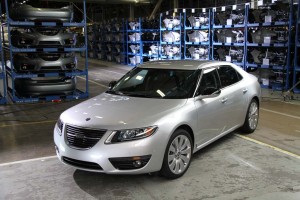Struggling under court protection to raise cash and pay off angry creditors Swedish automaker Saab hopes to get back into the business of building cars by sometime in mid-November.
That is just the latest in a series of plans to restart the company’s headquarters assembly plant in Trollhattan, Sweden, however, and skeptics would be far from surprised if the maker misses that goal, as well.
After being rescued from the automotive rubbish heap in early 2010, Saab’s new parent – now known as Swedish Automobile – fell short of its sales targets and steadily deeper in debt. By late March of this year the company’s unpaid vendors decided to boycott, leading to the shutdown of the Trollhattan plant.
Efforts to negotiate a settlement failed and the cash-short company went looking for new partners. Several possible alliances fell through before Saab lined up two partners in China, the country’s largest auto retailer, Pangda, and emerging automaker Zhejiang Youngman Lotus Automobile. Together they have promised to provide over $300 million in return for a majority stake in Swedish Automobile – but the alliance is currently tied up in the Chinese bureaucracy.
Facing the prospect of a forced bankruptcy that could permanently shut it down, Saab filed for court-guided reorganization, a process somewhat similar to the U.S. Chapter 11 bankruptcy, but with a 90-day window for turning things around.
Initially, a district court rejected Saab’s petition but last week it was approved upon appeal.
Saab officials have said they intend to pay off their debts in full. But they have also indicated they may need to lay off some of their 3,600 Swedish employees. Unpaid workers had filed a petition seeking to force Saab into bankruptcy, a move that would likely have resulted in the company’s failure.
Resuming production is critical for the troubled maker. While its dealers reportedly have a stock of products built before the March boycott began Saab only makes money when new products roll off the assembly line. The Trollhattan shutdown has impacted its two primary product lines: the 9-3 and newer 9-5.
Production of the maker’s newest model, the 9-4X, continues, but demand for the crossover has been limited, analysts warning that nervous shoppers are largely steering clear of a company with such an uncertain future.
Saab originally hoped to resume production by late April and has set a number of alternate dates since then. But after receiving a $96 million bridge loan earlier this month – and with signs the Chinese government is now moving forward on the Panda and Youngman Lotus deals – the maker believes that this time it can finally get back into the business of building cars.


Do you really mean the 96 million bridge loan is actually paid? Or are you referring to the fact that the bridge loan was signed in september?